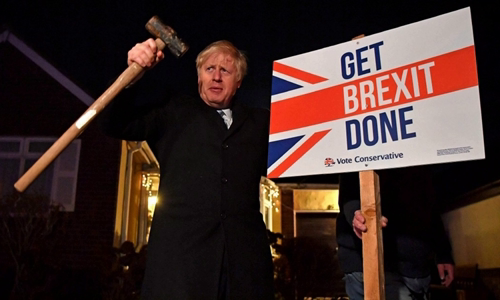Queen Elizabeth II ratified Brexit on January 23, after the British parliament passed the British Agreement law leaving the European Union (WAB).
The Queen's approval, as head of state, paved the way for Britain to leave the EU after years of controversy and delay. British Prime Minister Boris Johnson will sign an agreement to withdraw from the EU in the coming days. Britain is scheduled to leave the EU at 23:00 on January 31, after a vote passed in the EU Parliament on 29 January.

British Prime Minister Boris Johnson hammers by the sea Completing Brexit in London in December 2019 Photo: AFP
After that, the UK will start negotiating terms of trade and sharing agreement from data to fishing grounds with the remaining 27 members of the alliance. Official negotiations are likely to start from March. Johnson set the deadline to reach an agreement with the EU by the end of 2020, instead of 2022 as the previous bill, while Brussels said a comprehensive deal took longer.
The UK government is also demanding post-Brexit rights to establish its own rules on sensitive issues such as environmental standards and labor rights. EU officials say that could give Britain an unfair advantage, threaten retaliation with tariffs and quotas, which could damage the UK pharmaceutical and auto industry.
But some analysts believe this is the price Johnson is willing to pay for fulfilling his voters' "wish to complete Brexit" and at the same time help him reach a quick post-Brexit deal with the US and other countries. .
A deal "is President Trump's absolute priority and we hope to accomplish that with Britain this year," US Treasury Secretary Steven Mnuchin said before coming to London this weekend.



 ElizabethHocog
ElizabethHocog







